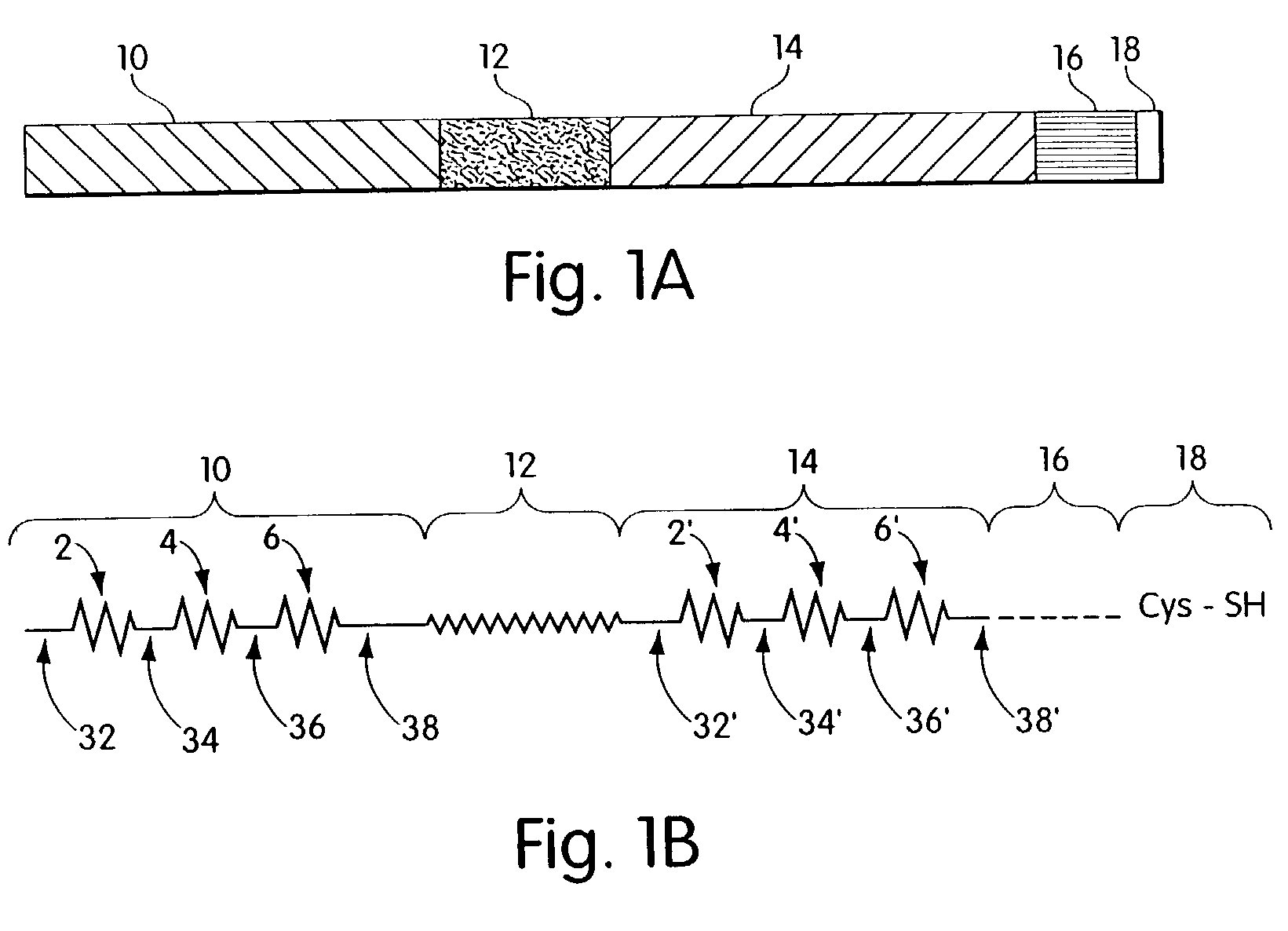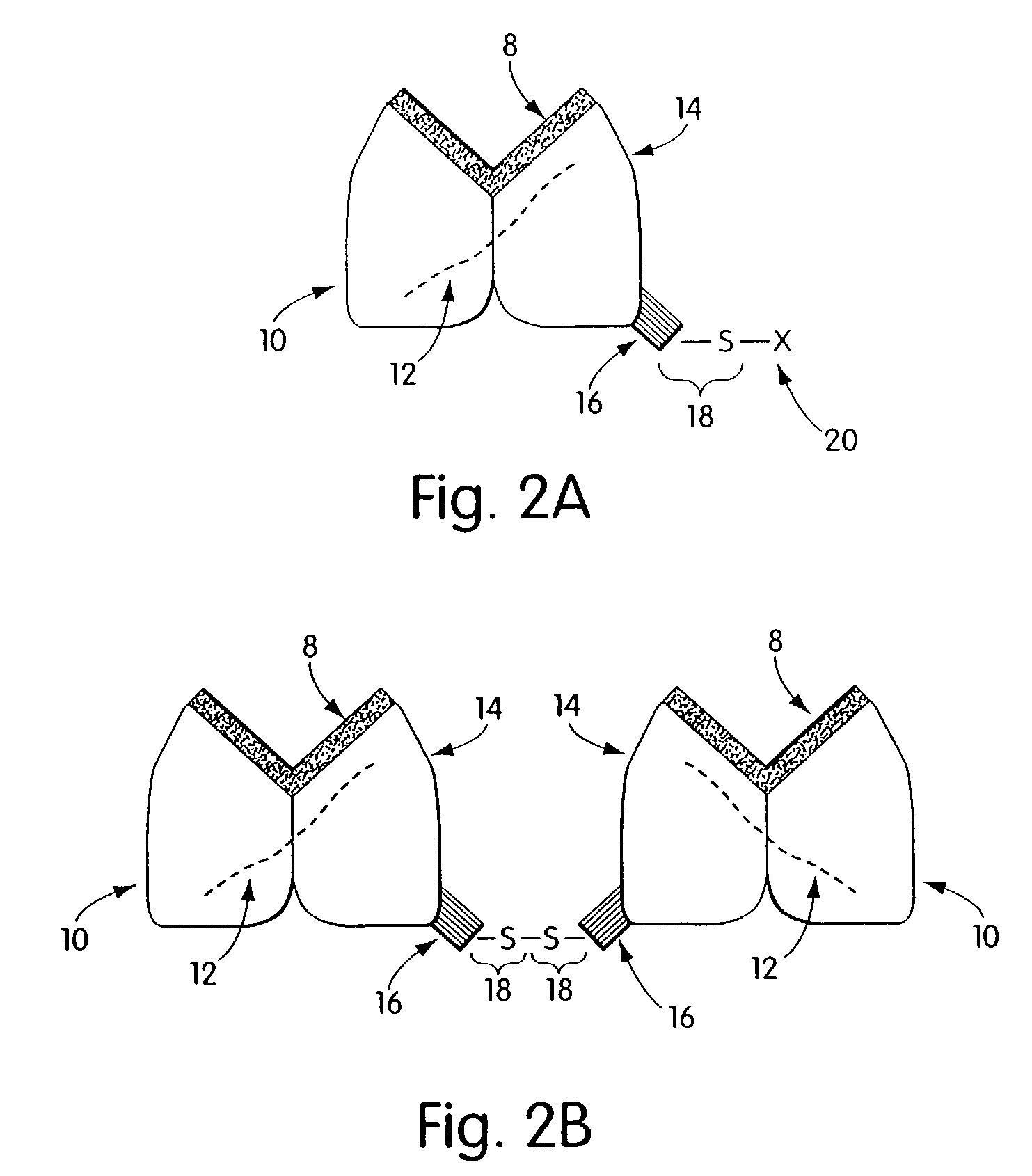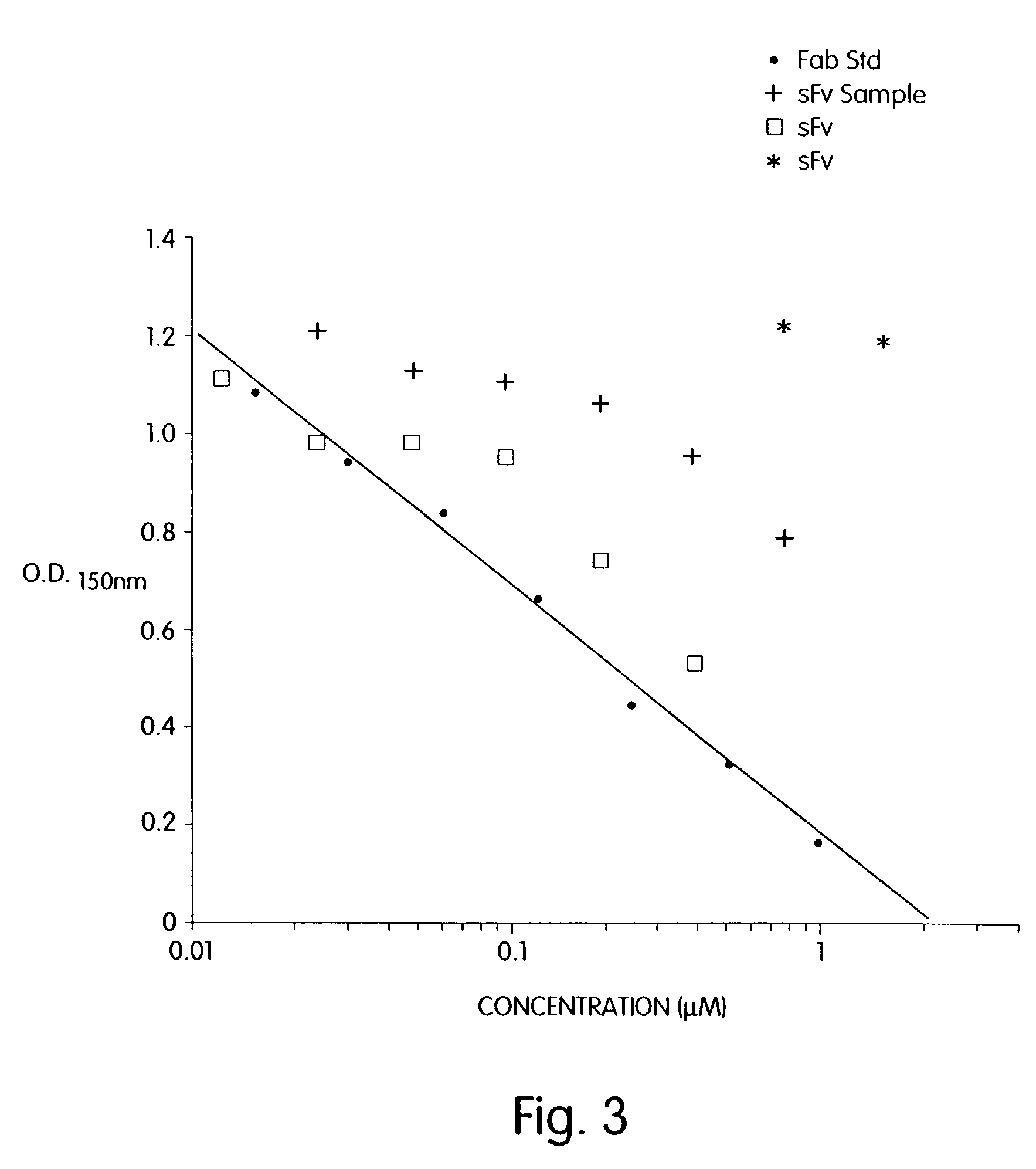Biosynthetic binding proteins for immuno-targeting
a biosynthetic and immuno-targeting technology, applied in the field of biosynthetic compositions, can solve the problems of reducing the pharmacological value of these constructs or those disclosed, degradation of these constructs, and pharmacokinetic properties, and achieves the effects of improving the pharmacological value of these constructs in vivo, and facilitating the synthesis of new biosynthetic components
- Summary
- Abstract
- Description
- Claims
- Application Information
AI Technical Summary
Benefits of technology
Problems solved by technology
Method used
Image
Examples
example 1
Synthesis and Expression of the sFv Constructs (741F8, 26-10 and 520C9).
[0097]The construction of several sFv genes using different but standard recombinant DNA technology, well known to those having ordinary skill in the art, is described below. These procedures include the amplification of the VH and VL gene sequences by PCR, the ligation of appropriate synthetic DNA duplexes and the cloning of VH or VL genes by colony hybridization.
[0098]A. 741F8 sFv′.
[0099]The VH and VL genes of the 741F8 anti-c-erbB-2 monoclonal antibody were isolated from the cDNA of the parental 741F8 hybridoma line by PCR using primers homologous to the N-terminal coding regions of VH, VL, CH1, and CL. The PCR-amplified VH and VL genes were isolated by polyacrylamide gel electrophoresis and cloned into a pUC cloning vector. The first FR region of the 741F8 VH gene however contained spurious mutations due to the PCR procedure. Errors were rectified by the replacement of the first 70 nucleotides of 741F8 VH wi...
example 2
Renaturation, Dimerization and Purification of sFv Proteins
[0107]A. Renaturation and Purification of sFv Monomers.
[0108]Protocols for renaturing sFv monomers derived from E. coli inclusion bodies are described below. In separate experiments the 7418, 26-10 and 520C9 sFv polypeptides were expressed in E. coli. The unfolded sFv proteins were solubilized from inclusion bodies and refolded under appropriate redox conditions. The refolded sFv polypeptide chains were purified by affinity chromatography or by a combination of ion-exchange and size exclusion chromatography when affinity chromatography was not feasible or expedient.
[0109]Renaturation of 741F8 sFv′.
[0110]Inclusion bodies containing the 741F8 sFv′ proteins were washed in a buffer containing 25 mM Tris, 10 mM EDTA, 1.5 M GuHCl, pH 8.0 and solubilized in 25 mM Tris, 10 mM EDTA, 7 M GuHCl, pH 9.0 to an OD280 nm of about 25–50. The sample was reduced overnight at room temperature by the addition of dithiothreitol (DTT) to a final ...
example 3
Immunoreactivity of the Monomeric and Dimeric sFv Polypeptides
[0127]A. Radiolabeling of the sFv′ Constructs.
[0128]The sFv′ polypeptides may be labeled by the chloramine-T method as described (DeNardo, et al., 1986, Nucl. Med. Biol. 13: 303–310). Briefly, 1.0–2.0 mg of sFv′ was combined with 125I [14–17 mCi / μg] (Amersham, Arlington Heights, Ill.) at an iodine to protein ratio of 1:10 in a 12×75 mm plastic test tube. 10μl [1 mg / ml] of chloramine-T (Sigma, St. Louis, Mo.) per 100μg of protein was added and the mixture incubated for three minutes at room temperature. After the reaction was terminated, unincorporated 125I was separated from the labeled sFv′ by the spun-column method of Meares, et al., 1984, Anal. Biochem. 142: 68–78. Specific activities of 0.2–1.0 mCi / mg for the 125 I-labeled products may be routinely obtained.
[0129]B. Competition ELISA
[0130]In order to prepare c-erbB-2, SK-Br-3 breast cancer cells (Ring et al., 1989, Cancer Res. 49: 3070–3080), were harvested and resusp...
PUM
| Property | Measurement | Unit |
|---|---|---|
| length | aaaaa | aaaaa |
| pH | aaaaa | aaaaa |
| pH | aaaaa | aaaaa |
Abstract
Description
Claims
Application Information
 Login to View More
Login to View More - R&D
- Intellectual Property
- Life Sciences
- Materials
- Tech Scout
- Unparalleled Data Quality
- Higher Quality Content
- 60% Fewer Hallucinations
Browse by: Latest US Patents, China's latest patents, Technical Efficacy Thesaurus, Application Domain, Technology Topic, Popular Technical Reports.
© 2025 PatSnap. All rights reserved.Legal|Privacy policy|Modern Slavery Act Transparency Statement|Sitemap|About US| Contact US: help@patsnap.com



